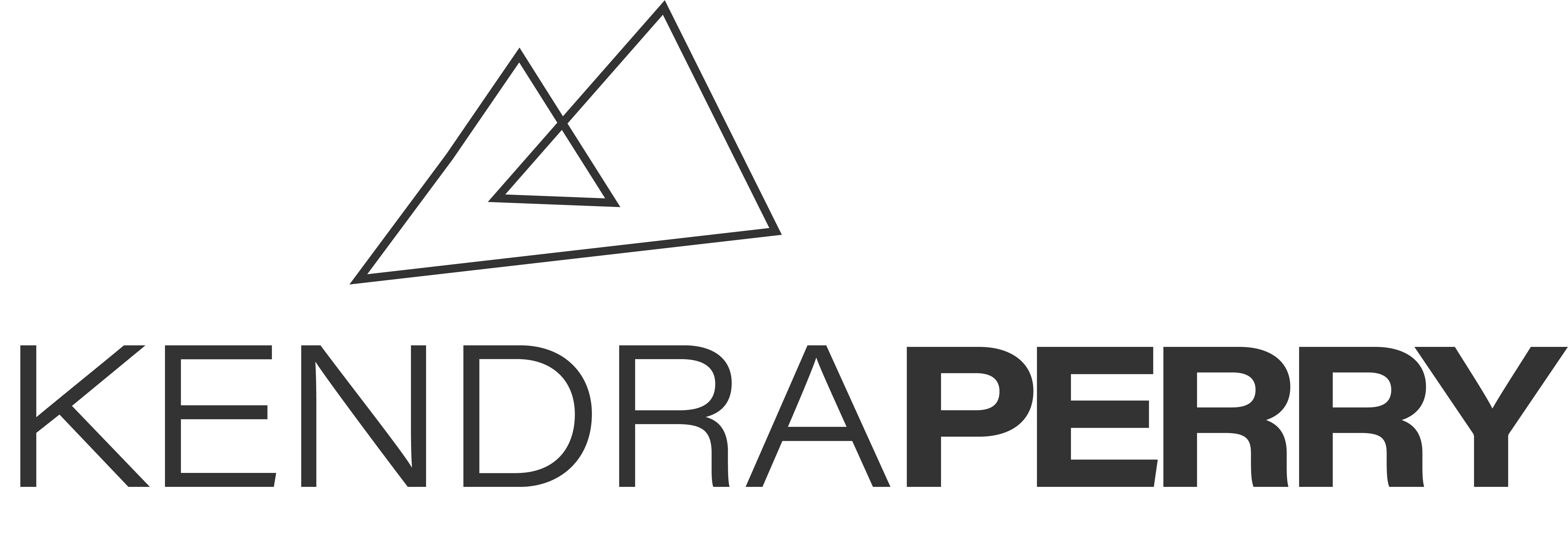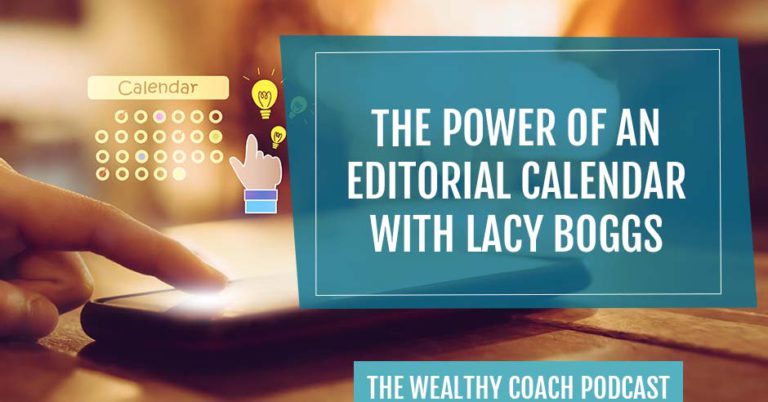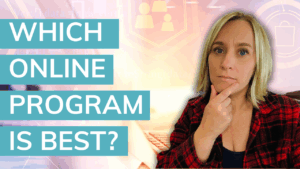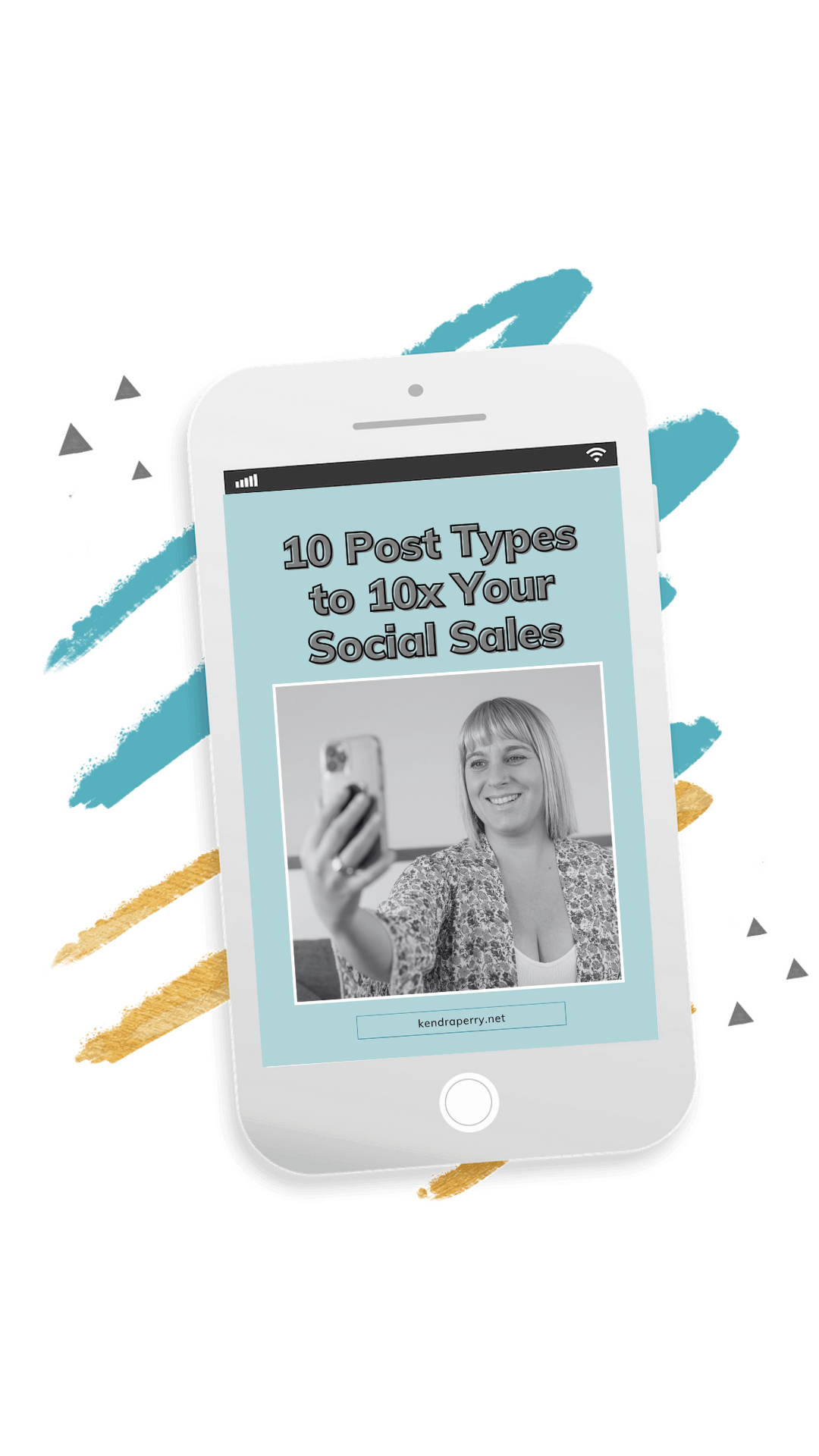Copywriting is an excellent skill that we know a lot of people possess. But sometimes, even the best copywriters still experience the ever-catastrophic “writer’s block”- where the mind just can’t come up with creative written content, no matter the experience or skill. This is where an editorial calendar comes in. Today, Lacy Boggs shares the struggles of a writer and how an editorial calendar can become a game changer in beating our writer’s block! Lacy is the Director of the Content Direction Agency and an experienced content strategist who helps businesses create and implement a content marketing strategy. Tune in and learn how to ace your content strategy by building the right editorial calendar!
Grab Lacy’s free editorial calendar template: https://lacyboggs.com/podcast
Follow Lacy on social:
https://www.instagram.com/lacylu42/
https://www.facebook.com/lacylu42/
Wesite: http://lacyboggs.com
—
Listen to the podcast here
The Power Of An Editorial Calendar With Lacy Boggs
Welcome back to the show. I am super pumped to bring you an amazing interview with Lacy Boggs. We’re going to be talking about something that you may not even know what it is and never considered, but when you do understand what it is, you’re going to understand how powerful it is and how much it can help move your business forward.
I know when we talk about content, there are all kinds of weird things that happen in your body. You get tight, tense up, and feel sticky because content seems to be this big resistance. It’s this huge mountain to overcome when it comes to running your business, marketing it, and getting clients. I guarantee you’re making it way more complicated than it needs to be. That’s why I brought in Lacy.
Lacy is a Content Strategist, author of the bestselling Kindle eBook, Make a Killing With Content and the mastermind behind the Ace Stone Marketing Detective podcast. As the director of the content direction agency, she helps bring small business owners to create and implement a content marketing strategy that feels like a playground for ideas and results in deceptively powerful nurturing content to create massive growth. I know you’re going to love this interview with Lacy and let’s jump into it.
—
Lacy, welcome to the show.
Thank you so much for having me.
I’m so pumped to talk about this topic because right before we started recording, we were talking about how content can be such a block for so many people. Anyone who’s reading, if you’re feeling resistance or you feel like your shoulders are tightening and your jaw is clenching when you think about content, it’s okay. It’s normal. Lacy is going to help us with that. I know you’re going to love this interview. Lacy, I would love to know how did you get into this space? What’s your story?
It was a long and winding road to get here, but everything comes full circle, doesn’t it? I did not study this sort of thing in college. I was a Film major. I wanted to be a director. I got to Hollywood. Hollywood and I didn’t get along. I had a quarter-life crisis around the age of 23 or 24 and went back to my first love, which was writing. I got a job at a PR firm in California, and then eventually my husband and I moved to Colorado, which is where we live now.
When I got here, there was a temp agency for creatives. I showed up and said, “I’m a copy editor.” They’re like, “I’m looking at your resume. No, you’re not.” I was like, “Test me. I can do this.” They gave me a copy-editing test and the guy told me I was the only person he’d ever seen score a 100% because I’m a grammar nerd. They got me my first job here as a copy editor and eventually editor. They were the official travel guide magazines that you pick up at the airport like the free magazine you get when you go to California or whatever. That is what we were writing.
I did that for a while and then I was a food editor for a hyper-local magazine here in Colorado, which is nice work if you can get it. Getting paid to eat and have opinions isn’t such a bad job. The magazine was so small. I was routinely working 60-plus hour weeks and had to be there until 3:00 AM on deadline, and then I got pregnant. I was like, “That sounds horrible doing that with a baby.”
I decided to go out on my own. I tried freelancing for a while and I started a food blog because I was a food writer. After the first year, my husband said, “I love that you’re staying home with the baby, but I need you to make a little more money.” I lovingly call that first year my four-figure year. I said, “It’s okay. I have a new idea. I’m pretty good at this blogging thing. Maybe somebody will pay me to do that.” I hung out my shingle as a ghost blogger for other people’s small businesses. In fact, people would pay me to do that. That was ten years ago in 2022. My baby is now 11. It has grown organically since then, so now we’re an agency. I have four other writers on the team and we are rocking it.
I love that. That’s so interesting that you wanted to get into film and didn’t like Hollywood. It’s such a fascinating story.
All that film school has not gone to waste. It’s all about telling a compelling story and that’s still what I’m doing. It’s just a different medium.
It’s so interesting because my partner was a filmmaker and now he’s getting more into content video strategy. I’m like, “You’re still using all those documentary and film-making skills.” In something that’s so relevant and not such a cutthroat industry as I’m sure Hollywood is. I want to dive into this concept of an editorial calendar. I bet my audience has no idea what that is. Maybe start by telling us what it is.
I learned about and borrowed this term from the magazine publishing industry. It’s also true in newspapers or anything that publishes. An editorial calendar is a calendar of what you’re going to publish and when you’re going to publish it. It’s called editorial because that’s what the writing is. It’s your editorial content. In marketing terms, it is a calendar of what kind of content you’re going to put out and when.

I could hear the screaming in the future of people reading this going, “I don’t want to do that.” Hear me out. I’m going to tell you the why. In simplest terms, that’s all it is. It’s a schedule. It’s a calendar of what you’re going to post and when. It is aligned with your sales goals. If you work on a launch model, the very first thing you put in your calendar is when you’re launching, then we work backwards from that date to plan what content you’re going to up until then.
If you don’t work on a launch model or if you’re a coach who has evergreen offers like one-on-one stuff that’s always available, you can still do that. You can create little promotional arcs in your calendar by saying for example, “I know summer is slow, so I want to do a promotional push in April and May so that I can make sure I get people booked in for the summer.”
You’re looking ahead, deciding what you want to sell, and then planning your content backwards from that. That’s my biggest tip about a content calendar. Don’t work from today and work forward. Work from your next promotion and work backwards. What you’re going to find out is that to have a successful promotion through your content, you need to be doing that as much as 4 to 6 weeks before you launch something. You want to be teasing it and overcoming objections before people even know they have them and that kind of thing. That’s how you’re going to be the most successful with the content calendar.
I love this so much. It sounds like it requires a person to be somewhat organized a little bit.
My huge caveat here is that this is a living document that you’re creating, so life changes. I never recommend that people plan out an editorial calendar more than six months in advance because of business changes and life changes. Maybe there’s a pandemic. Who knows? You never know what’s going to happen, but having that big-picture arc for at least a quarter and maybe six months is going to be so useful.
It changed my life because I was a lot like that person who was like, “Make some content.” Suddenly, I’m like, “That thing I’m promoting is next week. All my content is talking about something totally different.”
The other thing that this can help you with is I’m a big proponent of what I call upcycling. If you do any big piece of content for your marketing, what I consider a big piece would be a blog post, a podcast, videos, or anything that requires more effort than a tweet, you could chop that up, use it, and upcycle it into your Instagram content, your Facebook posts, your email that goes out next week, or all kinds of things. When you’re a little more organized and a little more ahead of the game, you can do less work.
I love this because there’s a lot of burnout that can happen around content because it does require some creative power. It’s a different type of brain than if you’re just answering an email, doing data entry, or whatever. I find that if people are doing that on the fly, it can be quite exhausting. I don’t know if that’s something you’ve seen in people.
In fact, a lot of times. That’s why people come to us. It’s to have us create some of their content because they’re exhausted. They’re saying, “I have to be in so many places. I can’t do it all as one person or even as one person with a small team.” That’s a valid concern. Even if you are the coach and you’re the face and voice of your brand, you don’t have to create every word that goes out yourself. None of the big brands does that if you think about it. Oprah isn’t writing all her tweets. They have a team and a process. You can get to that point as well.
Something we do a lot is for example you, Kendra, if you have something like a podcast and that’s your zone of genius and where you love to create content, it may still be valuable for your business and your brand to have blog posts, but maybe not valuable for you to spend your time writing them. A lot of times people will come to us and say, “I have a podcast. Can you turn my shows into blog posts so that we get the good SEO juice and all that other good stuff?” That’s how we help people multiply their presence without multiplying their workload.
You’ll be proud of me. I started doing that in 2021 with the show. I have someone who puts it into a blog post. It’s great for the website. I think people are like, “I need more ideas.” I’m like, “You probably don’t need more ideas. You just have to make better use of the stuff that you are putting out there.”
That’s 100% true. One thing that I like to do with people, we have an offer that’s a VIP day where we build your editorial calendar with you. It’s done with you like I do much of the work, but you got to help me understand your business and stuff like that. That’s why I interview the person and we come up with dozens of topics, and then I go and stick them in an editorial calendar based on their promotional calendar.
It’s all done for you. What’s awesome is people don’t know how many ideas they have until I started interviewing them and pulling them out. Sometimes it’s just that you’re too close to your own business. It feels like you’ve said the same thing over and over again, or you assume that people already know something that maybe they don’t. I have a good method for pulling that goodness out of you. It’s like, “I can write a blog post about that or I can turn that into an email, etc.”
It’s so important because, for relatively new business owners like my audience, they can look at bigger experts or coaches and be like, “They are everywhere and they’re putting out so much content. It’s insane. How will I ever do that?” A lot of times, they’re probably all just doing what you’re talking about here.
Also, you probably say this elsewhere in your show but it’s hard to compare your raw footage to their coming soon attraction trailer. You don’t see what’s happening in the back end. They’ve been doing this for a long time. They probably have a big team. It’s usually not useful to compare yourself to those big coaches.
I agree. What happens to people who are more spontaneous? They like to create content more at the moment when they have inspiration or see something in their audience. They like to do it when they feel inspired. How would an editorial calendar fit into that?
People ask me this all the time and I say, “Good. I’m glad that you’re inspired to be spontaneous. What do you do when you’re not inspired?” Usually, they’re like, “Uh.” The editorial calendar then is a backup for when you don’t feel inspired. Typically, what I say is to plan your big rocks. You decide what your big rock is. Is that your blog, your email, your podcast or whatever? If you’re feeling inspired to write say a Facebook post or an Instagram post, go ahead and do that and save it somewhere. Maybe you upcycle that. Maybe that topic becomes your podcast episode or your blog post or your email.
It’s very much an ecosystem. Use that inspiration. Don’t let it go to waste. Don’t be like, “That wasn’t on my calendar so I can’t talk about it.” Go ahead and talk about it. If you have to, shift things around. Go ahead and talk about it, and then you have more fodder for later on. I saw this happen in real time. I don’t know if you’re familiar with Glennon Doyle’s podcast, We Can Do Hard Things.
I think I’ve heard of it.
Glennon Doyle, Abby Wambach, and Glennon’s sister, whose name I can’t remember, have a podcast. Their episode was called The Episode That Wasn’t. What happened was they had a guest who was rude to someone on their team and because of their values, they were like, “No, we’re not going to do that.” They said, “We’re not going to have you on.” In order to go ahead and keep putting out stuff, they did the episode about their values and why they made this decision without calling the person out. I thought it was so great because it was also demonstrating in real-time that they clearly have an editorial calendar. They prepare for these interviews and they were able to go with the flow when something changed. Even the big people who have bestselling books and huge podcasts do this.
It’s so smart and I love that you described it so perfectly. It’s like you always have this baseline of content going out, and then you can always create more with inspiration. For my Instagram for example, I always have my static posts and reels that go out no matter what. I use my stories for the stuff that I feel is more inspirational.
Sometimes, I don’t post for a week or so because I’m not feeling it, but I still got content going out. I don’t have to worry about it. Sometimes I get COVID and I’m like, “I can’t do it,” but there’s still content going out. Sometimes I’m inspired and I feel like sharing all these things with my audience and that’s the thing. You always have this baseline that’s your minimum, but then there’s always room for you to be more inspired.
I call that your “show your work” channel because I love the idea of having a place where you’re showing yourself going through it in real time. For you, it’s your stories. Whatever it is, being inspired or I had this idea or whatever it is. I got off the call with this person and I had this amazing a-ha moment. That’s your “show your work” channel. Where you’re working things out in real time. That’s what people love about social media, to be honest. They like that behind-the-scenes look. We then got the more polished channels that are ready to go. That’s what’s on your editorial calendar. That’s what you’re planning ahead for.
That’s so important. You mentioned you don’t recommend going more than six months out in advance because it seems crazy. Things are always changing, but what would you say to someone who has never had an editorial calendar? How much do you recommend that they start with planning out?
I would say, “When’s your next big promotion? Start there,” unless it’s next week. Do what you can and move on. Start with your next big promotion. Is that six weeks out? Is that two months out? Where is it, and plan your content backwards from there. They have this magical a-ha moment when we do this together. It’s like, “This is so much easier to do this launch or this promotion when I work it out this way.”
Here’s the real secret. When we forget to promote until the week before, which we’ve all done, no shame, suddenly, every piece of content you put out has to do a lot more heavy lifting. It has to do a lot more work. It has to reach a lot more eyeballs and the stakes are a lot higher. When we plan it out in advance and we’re promoting something even lightly or even barely offhand mentioning it in an email or whatever for 3 or 4 weeks, suddenly, every piece has less work to do. It’s less important that one email converts at a high rate. We’re putting less pressure on ourselves, less pressure on our content, and our audience.

That’s so true because I’ve been in that situation where I’m like, “The launch is next week,” then I’m pumping out the content. I’m like, “This better work.”
That’s right because now I got to fill that program or whatever it is, but if I had three weeks to promote that, it would be so much easier or whatever it is.
I’m curious, how does it work with an editorial calendar if you outsource content or you have people helping you with your content?
It becomes even more important. It’s one of the three things I say you have to successfully outsource your content. You have to have an editorial calendar at least in some form because that way, the team that you’re outsourcing knows what’s coming. They know what their assignments are. You need to have a brand voice style guide, which is essentially telling somebody else how to sound like you or sound like your brand.
That sounds fancy but it doesn’t have to be. It’s a living document. It’s something you work on. It doesn’t have to be one and done. It tells the people like, “We swear or we don’t swear. We use the Oxford comma or we don’t use the Oxford comma. We use ampersands or we hate ampersands. Here’s a language we always use and here’s a language we don’t use,” and that kind of thing. If you start documenting that now for yourself even before you have somebody doing content for you, you will thank yourself later.
It’s silly things like, “How do we refer to our programs? What’s our official tagline? Do we use title case when we write a title of a blog post or do we use sentence case?” Dumb things that suddenly it’s like, “This matters,” because we want it to feel consistent when we hand it off to somebody else. Start there.
The third thing is the workflow. This can be as simple as who is responsible for what and how it gets approved. If our team is going to start writing blog posts for somebody, we want to know, “How do we get the information from you, whatever that is? When do you want to see the rough draft? How many days do you need to review it and give us your approval? Who’s going to post it after that? Whose job is it to take it and put it on the blog or whatever it is?” These sound fancy but having a very simple document that lays out who’s responsible for what will save so much time and energy.
It’s something that I teach my students about early on in my program. I’m like, “Let’s talk about the company manual.” We need to document processes because if it ends up all in your head, at some point when you want to hire help, you realize you have to take it out of your head and put it onto paper or into a system.
It becomes a whole thing.
This is exactly what happened to me two years into my business. I hire my first VA. I’m like, “Everything is in my head and now I have to spend the next month documenting everything I want this person to do.” I’m curious about your perspective on this because I work with people who are a little bit newer. Some of them are brand new. They’re starting their first social media account, and some of them are a few years in. They’ve been posting content for a while, but because content is this huge block and huge resistance, I have people who are pretty new who are like, “I want to outsource that.” I’m curious, at what point is someone ready to outsource content?
I understand the desire to say, “No, I’m not good at this. I want somebody else to do it.” I did that with my bookkeeper and things like that early on. Here’s what we would ask somebody, “Are you already selling things? Have you got a proven offer and a proven audience to sell it to?” If the answer is no, then you’re not ready to outsource content because we don’t know what the message is that’s going to sell it. Usually, 9 times out of 10, like 99 times out of 100, a content writer is not also a messaging strategist. They’re not also a salesperson who is going to be like, “I know how to message this so we can sell a thousand things.”
That’s a common misconception. It’s a hard one because people will come to say a social media manager, a blog writer, a copywriter or whatever it is, and they think that person’s going to be able to solve their sales problem. Unless that expert that you’re hiring specifically says, “I can solve your sales problem,” they probably can’t because they’re not in their zone of genius. Their zone of genius is taking your ideas and offers that already sell and making them sound pretty, so people get excited about it, and things like that.
We might be able to solve an engagement problem. We might be able to solve certain ones but you should have an offer that’s clear and sells, and an audience to sell it to. That sounds backwards because how do you build an audience while you have to create content or buy ads? The answer is people buy from people they know, like and trust. They have to get to know, like and trust you first, especially when you’re a coach. That’s what they’re buying. They’re buying you.
Let’s be real, there are a lot of life coaches. There are a lot of health coaches or whatever kind of coaches. They are buying the person they resonate with. The only way to figure out if they resonate with you is through that conversation you’re creating with content. You got to do it yourself for a little while. Where you can get support is maybe you want to work with somebody like me to build an editorial calendar so you have a foundation, and know what you’re doing moving forward.
Maybe you want to work with a graphic designer who can make pretty pictures to go with your captions. Maybe you want to work with somebody and you’re like, “I’m just going to type it all in a document and you go post it on Twitter.” Those are all valid but I don’t think you should outsource the actual creation until you’re a little further along.
That’s so important because I’ve come across newer business owners. I’m like, “I hired this person to write my social media. They were terrible. They didn’t sound like me and all this.” I’m like, “They’re not magicians.”
They didn’t sound like you because you don’t know how to sound like you.
As you mentioned before, it’s so important to understand who you are as a brand and what you’re trying to make people feel when they come into contact with your business. What aspects of your personality do you want out there in the world?
Brand voice is picking and choosing the pieces of me that I’m going to show that are going to help people say yes to me. To tip on brand voice, this is one of my favorite little things. I like to put in the brand voice guide guardrails. I stole this from MailChimp. If you Google MailChimp brand voice style guide, they have theirs online. It’s way more than anybody needs. Don’t freak out when you see it. Unless you’re the size of MailChimp, you don’t need it to be that long.

One thing they do that I love is they say things like, “We’re funny but never crass. We’re educational but never pedantic.” I had a client once that had a very sexy brand. One of hers was, “We’re sexy but never sexual.” That was a great guideline for our writers to know where’s that line that I need to walk, and how I do that. It’s helpful to give that to people. It’s a helpful exercise to do that for yourself like, where do I fall?
I’m going to do that right after we get off the show. I’m creating an onboarding document for new team members and I’m talking about voice. I’m like, “Oh yeah.” I’m blunt but I don’t want to be a jerk.
That would be yours, “We’re blunt but we’re never a jerk.” This is also good for values. One of mine is, “We are very much about people.” I’m very much about people and I want to help people but I also don’t want to get into that people-pleasing where you’re bending over backwards and changing the world for somebody. That’s a good way for me to also explain our values to my team. Those guardrails are very helpful.
That’s great. I feel like I learned something valuable. What is it like to work with a writer for things like blog posts? Maybe take me through how you would work with a client.
The very first thing we do is a strategy call. That’s where we’re going to outline your editorial calendar. As I said, that’s one of the three things you need. We’re going to make sure you have one. We send our brand voice style guide template to the client and give them a chance to try to fill it out first. They meet with their writer right after that and finish it and fluff it out because there are always going to be things the writer asks that you didn’t think to add.
We get that brand voice style guide done, and then the writer and the client will work out the workflow. When are you going to turn in the rough draft? How are you going to review it? FYI, 99.9% of our people don’t come in with those three things and that’s okay. It’s very important that we have all three of them. Once we have those three pieces in place, the writer and the client get into a rhythm. They’ve already preset up.
Let me step back. They figure out how they’re going to get the information. That depends on how the client likes to think essentially. A lot of our clients will do a one-hour interview with the writer once a month. That’s usually enough for us to get the info we need for four blog posts, emails, or whatever we’re doing for them.
Sometimes, they like to do it asynchronously so that we’ll do Voxer. They can Vox back and forth. Occasionally, we have a person who loves to brain dump. They’ll do an outline style or stream-of-consciousness style in an email or something. Sometimes, we have people who have content already. For example, a podcast episode they’ve already recorded or a video they’ve already recorded, or even a coaching call. We do coaching calls that then we listen to, transcribe, and turn into a blog post.
With that out, how are we going to get the information? The writer says, “I turn in my rough draft on Monday. You have two days to review it,” whatever it is. They send back revisions. We do revisions and it’s ready to go by Friday to be sent out the following Monday. Whatever that looks like. They fall into a nice rhythm. The goal of all this is that essentially, the client gets a piece of content every week ready to go.
It’s an easy button. They literally copy and paste it into whatever, into their blog or into their email system or wherever it goes. It’s done. The great thing is we have a dedicated writer for each client. Over time, they get better at understanding your business, your clients and your voice. We have clients that have been with us for eight years at this point. They tell us they can’t live without us because we’re such an integral part of their marketing system that makes their marketing work.
I love that so much. It’s so valuable. It’s something that after you get through that beginning phase of testing content, understanding your voice, what you sell, your ideal client, and all that stuff is so valuable to work with someone like you.
It’s so much fun too. We love it. We always say we’re industry agnostic because we can write about any niche. It’s so much fun to learn things. We have a monthly writers’ meeting. One of our favorite things to do is bring something you learn from one of your clients this month. It’s so great because we’re always learning great stuff. We’re like, “We need to buy so-and-so’s course. It’s so good.”
I love that. I’m like that too. I’m like, “What course can I buy this week?” If my audience wants to stalk you online, how can they find you?
Everything starts at LacyBoggs.com. First of all, there is ten years’ worth of blog posts, so go back and read. Also, there’s a free library, so if you go to LacyBoggs.com/library, you can sign up for it. It’s got a ton of templates and tools, and things like that to help you get started. There’s an editorial calendar template in there if you want mine. It’s a great place to get started. I’m @LacyLu42 on Instagram and that’s a good place to follow me as well.
Thank you so much. I appreciate you being with me. This has been super valuable. I hope this blows people’s minds open to the world of editorial calendars. Thank you, everyone, so much for tuning in. I will see you next episode, same place, same time, where I help you become wealthy AF.
Important Links
- Lacy Boggs
- Make a Killing With Content
- Ace Stone Marketing Detective
- We Can Do Hard Things
- LacyBoggs.com/library
- @LacyLu42 – Instagram
- https://www.LacyBoggs.com/podcast
- https://www.Facebook.com/lacylu42/
About Lacy Boggs
 Lacy Boggs is a content strategist, author of the bestselling Kindle ebook, Make a Killing With Content, and the mastermind behind the Ace Stone, Marketing Detective podcast.
Lacy Boggs is a content strategist, author of the bestselling Kindle ebook, Make a Killing With Content, and the mastermind behind the Ace Stone, Marketing Detective podcast.
As the director of The Content Direction Agency, she helps small business owners create and implement a content marketing strategy that feels like a playground for ideas and results in deceptively powerful nurturing content to create massive growth.






